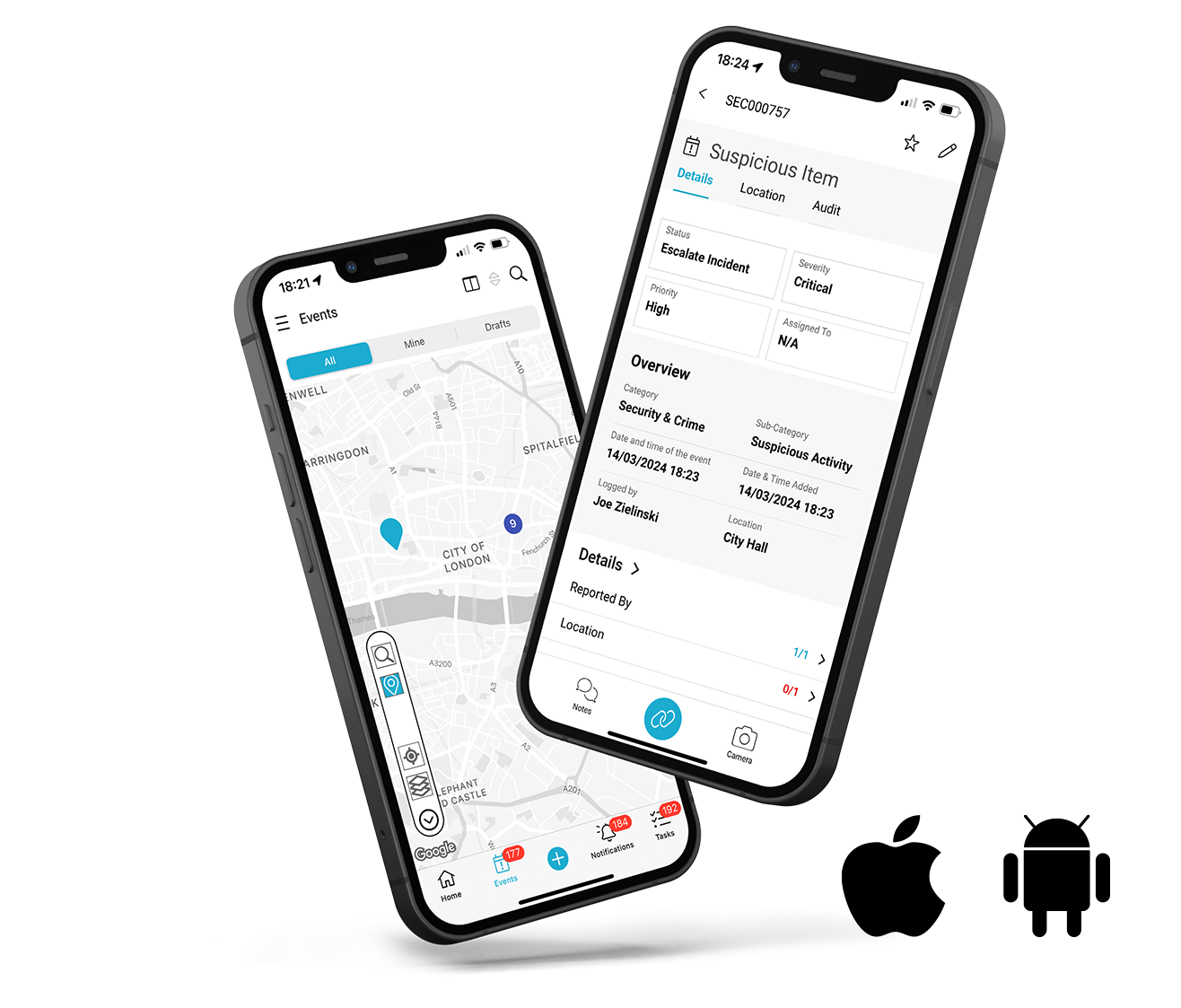Based on the typical setup, various roles within an organisation might be involved in reporting critical events or incidents. Here are some of the key roles that are commonly responsible for using and interacting with Reporter:
Security Teams:
Responsible for safeguarding people, assets and brand. Their assignment instructions vary from monitoring access, conducting patrols, responding to incidents, medical emergencies, enforcing policies and completing standard/emergency operating procedures (SOPs/EOPs) when required. Their role ensures a secure environment for occupiers and visitors contributing to overall safety and well-being.
Operations Managers:
In charge of overseeing the day-to-day operations, these managers use incident management systems to ensure any operational disruptions are quickly addressed and managed.
Health & Safety Officers:
These individuals are crucial in environments that require strict safety standards and would use incident management systems to report safety incidents, ensure compliance with health regulations, and maintain workplace safety.
Control Room:
A Control Room or Security Operations Centre tends to serves as the nerve centre for monitoring and managing all building risks, operations and systems. Highly trained operators respond to emergencies, centrally managing and coordinating incident response and critical communications through pre-authorised, automated operating procedures.
Customer Support Teams:
These teams often use incident management systems to report issues affecting customers, track resolution progress, and communicate updates to ensure customer satisfaction and support.
Human Resources (HR):
HR may use the system to report and manage incidents related to workplace safety, employee disputes, or compliance violations.
Facilities Management:
Responsible for the physical assets and infrastructure of an organisation, facilities managers might report incidents relating to building maintenance, safety issues, or utilities disruptions.
Building Management Teams:
Oversee operations, maintenance, and tenant services, ensuring smooth functioning and occupier safety and experience. Teams include Engineering, Housekeeping/Cleaning, Logistics, Post Room and Lobby. Teams receive critical alerts with linked instructions, role specific incident reporting (i.e. lift entrapments or unclean areas) and the allocation of incident-related tasking.
Front of House/Reception:
The role of front of house encompasses managing the reception area, greeting and directing visitors, handling inquiries, and ensuring a welcoming atmosphere. They play a crucial part in security by monitoring entry points and may also coordinate mail, deliveries, and maintain the appearance of the lobby area.
Loading Bay/Logistics
A critical role in facilitating the smooth transportation of goods - managing incoming and outgoing deliveries, ensuring efficient loading and unloading processes. These teams are responsible for maintaining safety protocols, controlling access to the loading area, and preventing congestion - contributing to uninterrupted building activities, tenant satisfaction, and minimising disruption.
Quality Assurance Teams:
In industries where quality control is critical, such as manufacturing or pharmaceuticals, QA teams would report incidents of non-compliance or deviations from standard protocols.
Risk Management & Compliance Officers:
These roles involve monitoring risks that could impact the organisation and ensuring compliance with laws and regulations. They might report incidents that pose a risk to the company or affect compliance status.
IT Staff/Helpdesk:
These professionals are primarily responsible for managing and responding to technical incidents, such as outages, breaches, or data loss. They use incident management systems to log, track, and resolve issues.
Executive Team:
Senior management may use the incident management system to receive updates about significant incidents, oversee the response, and ensure that incidents are handled in a way that aligns with organisational goals.
These roles highlight the cross-functional nature of incident management systems, which are designed to handle a wide range of issues affecting different parts of an organisation. This integration helps in ensuring a coordinated response to incidents, minimising impact, and maintaining operational continuity.
Iconic & tall buildings
Real estate portfolios
Venues & events
Studios & entertainment
Retail stores & supply chain
Critical national infrastructure
Security & FM service providers
Emergency responders







 +44 (0)1604 598989
+44 (0)1604 598989